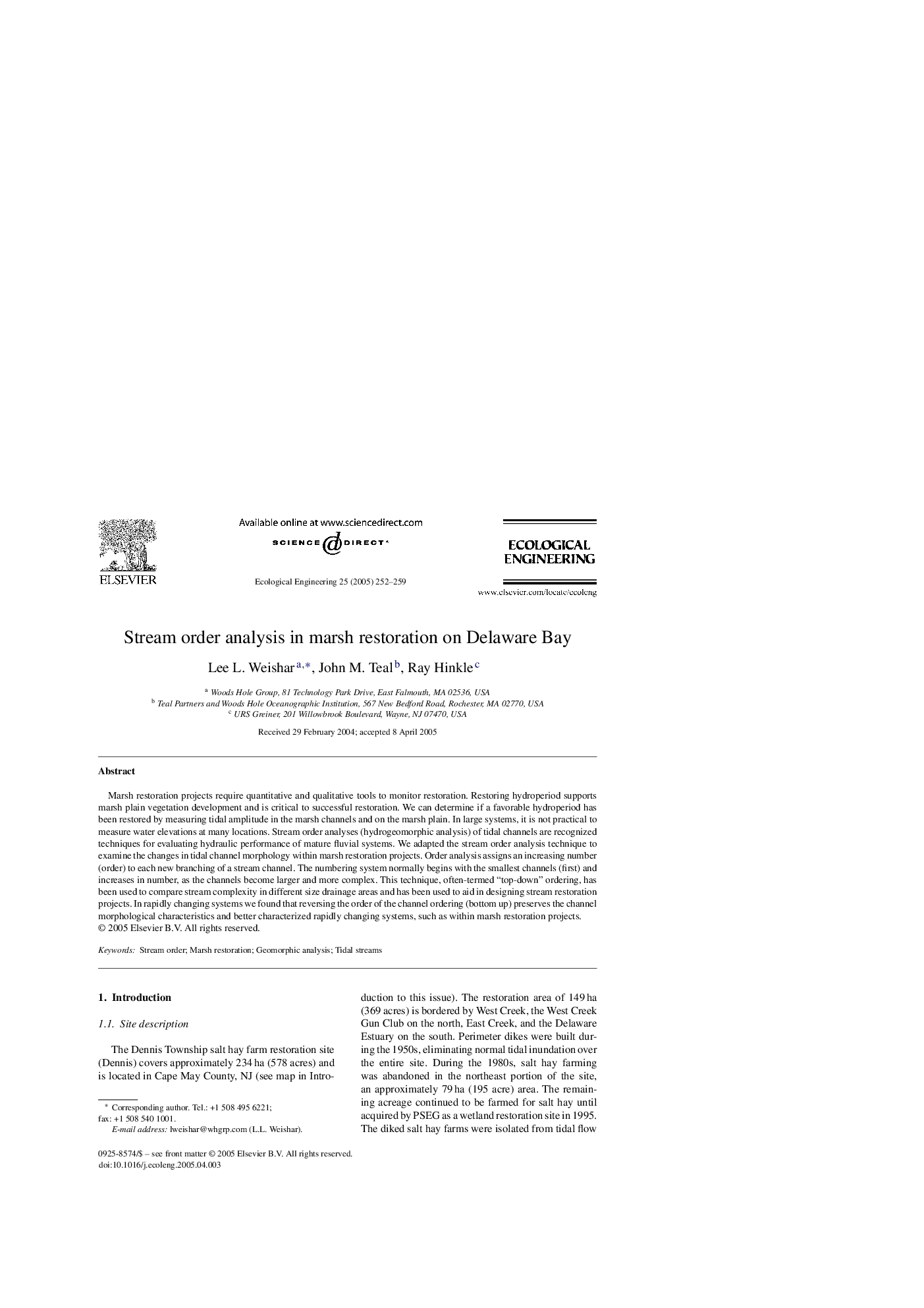| Article ID | Journal | Published Year | Pages | File Type |
|---|---|---|---|---|
| 9447490 | Ecological Engineering | 2005 | 8 Pages |
Abstract
Marsh restoration projects require quantitative and qualitative tools to monitor restoration. Restoring hydroperiod supports marsh plain vegetation development and is critical to successful restoration. We can determine if a favorable hydroperiod has been restored by measuring tidal amplitude in the marsh channels and on the marsh plain. In large systems, it is not practical to measure water elevations at many locations. Stream order analyses (hydrogeomorphic analysis) of tidal channels are recognized techniques for evaluating hydraulic performance of mature fluvial systems. We adapted the stream order analysis technique to examine the changes in tidal channel morphology within marsh restoration projects. Order analysis assigns an increasing number (order) to each new branching of a stream channel. The numbering system normally begins with the smallest channels (first) and increases in number, as the channels become larger and more complex. This technique, often-termed “top-down” ordering, has been used to compare stream complexity in different size drainage areas and has been used to aid in designing stream restoration projects. In rapidly changing systems we found that reversing the order of the channel ordering (bottom up) preserves the channel morphological characteristics and better characterized rapidly changing systems, such as within marsh restoration projects.
Keywords
Related Topics
Life Sciences
Agricultural and Biological Sciences
Ecology, Evolution, Behavior and Systematics
Authors
Lee L. Weishar, John M. Teal, Ray Hinkle,
